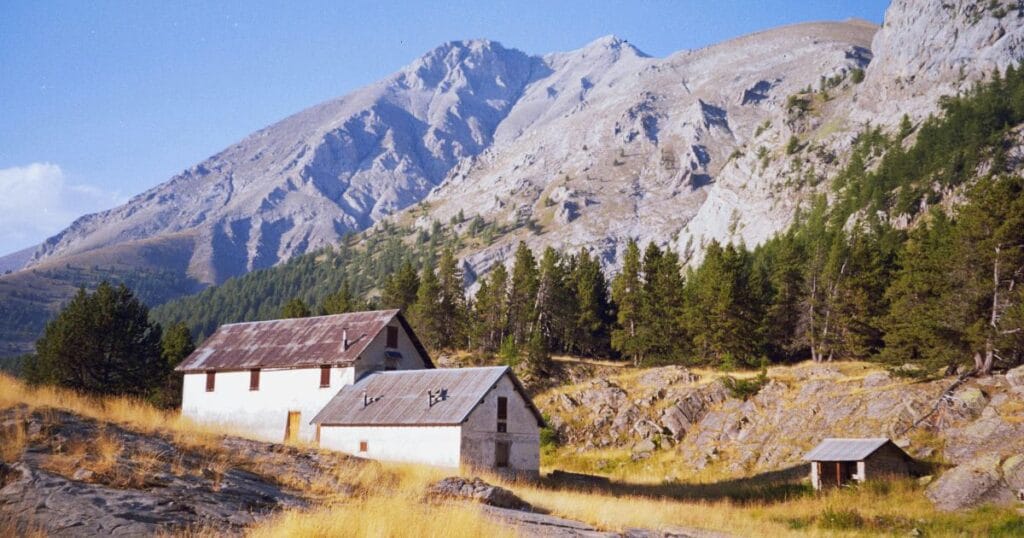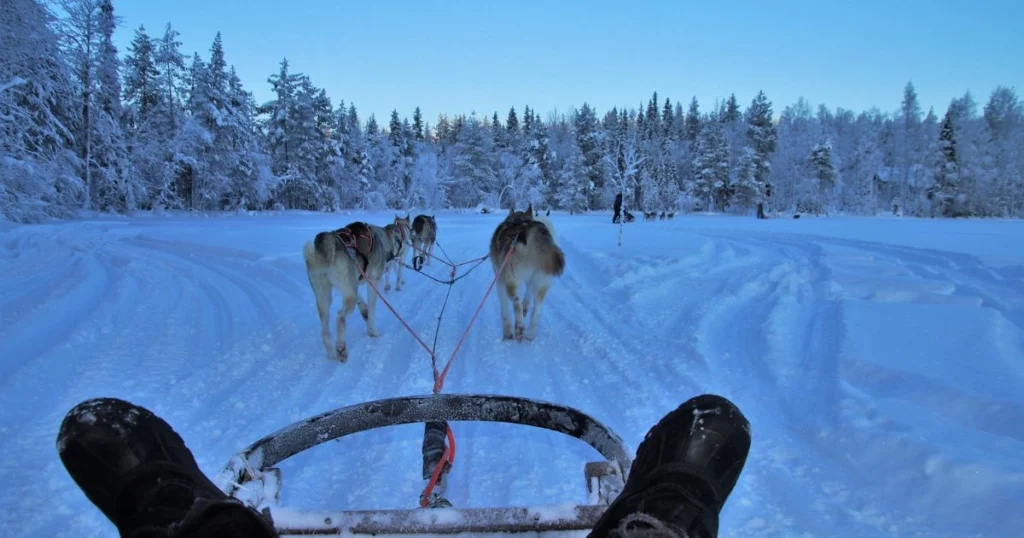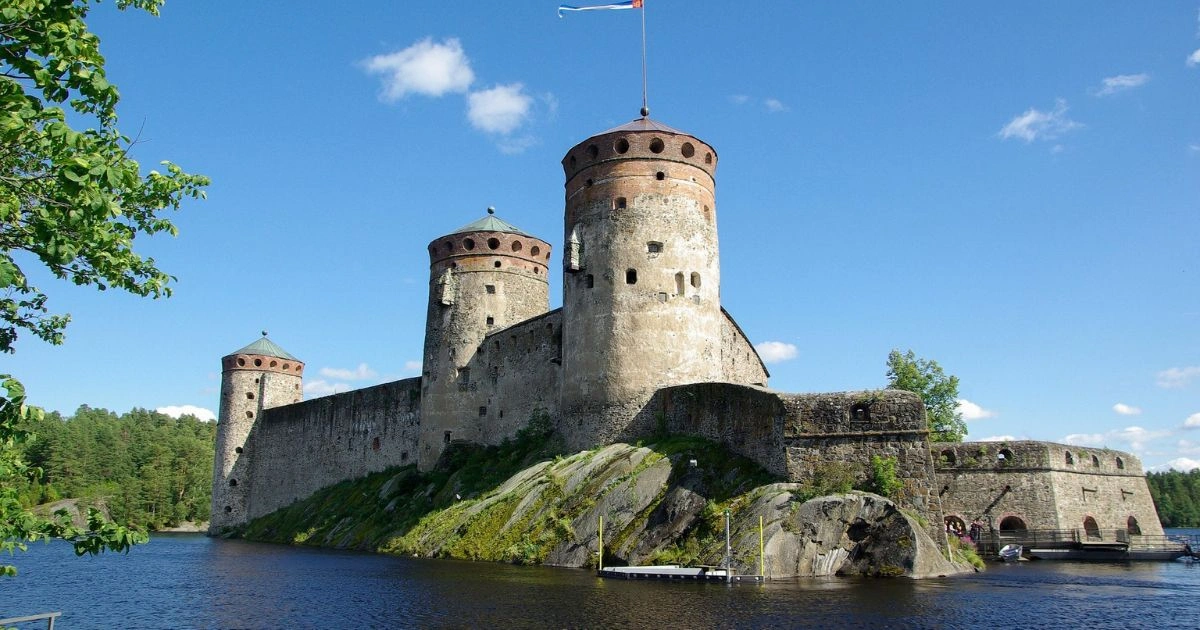Best Time To Travel To Finland: A Complete Season-by-Season Guide
Table of Contents
Finland is a land of stark contrasts, from the vibrant Midnight Sun of summer to the magical Northern Lights of winter. But when is the best time to experience this Nordic wonderland? Whether you’re chasing the aurora borealis, planning to meet Santa in Lapland, or hoping to explore Helsinki’s vibrant cultural scene, timing your visit can make all the difference to your Finnish adventure.
This comprehensive Finland travel guide goes beyond surface-level advice, diving deep into seasonal variations, regional differences, and activity-specific recommendations to help you determine exactly best time to travel to finland for your perfect trip.
Finland’s Climate and Seasons: An Overview
Situated in Northern Europe, Finland’s location between the 60th and 70th parallels north gives it a distinctive climate characterized by four well-defined seasons. The Gulf Stream brings warmer air than you might expect for a country partially within the Arctic Circle, but temperatures still vary dramatically throughout the year.
Here’s a quick overview of Finland’s seasons:
| Season | Months | Average Temperature | Daylight Hours | Precipitation |
|---|---|---|---|---|
| Spring | Mar-May | -3°C to 15°C (27°F to 59°F) | 13-18 hours | Moderate |
| Summer | Jun-Aug | 15°C to 25°C (59°F to 77°F) | 18-24 hours | Low to moderate |
| Autumn | Sep-Nov | 0°C to 15°C (32°F to 59°F) | 7-13 hours | Moderate to high |
| Winter | Dec-Feb | -25°C to 0°C (-13°F to 32°F) | 0-6 hours | Snow |
This remarkable seasonal variation makes Finland a year-round destination, with each season offering its own unique attractions and experiences. The best time to travel to Finland ultimately depends on what you want to see and do.
Best Time to Visit Finland: By Season
Spring (March – May): The Awakening
Spring in Finland is a time of rebirth and transformation. As winter’s grip slowly loosens, the country gradually emerges from its snowy cocoon into a vibrant, fresh landscape.
Overview: Spring begins with snow still covering much of the country, especially in northern regions. By May, however, southern Finland blooms with color as daylight hours increase dramatically. Temperatures rise steadily from below freezing in March to comfortable mid-teens (Celsius) by late May.
Pros:
- Fewer tourists mean more authentic experiences and space to explore
- Lower prices for accommodation and activities outside of Easter holidays
- Unique opportunity to witness nature’s dramatic awakening
- Increasing daylight with beautiful, lengthy sunsets
Cons:
- Unpredictable weather—you might experience everything from snowstorms to warm sunshine
- “Ruputus” (spring thaw) creates muddy conditions in many areas
- Some attractions and facilities in remote areas remain closed until summer
Activities:
- Witness the ice breaking up on lakes and rivers—a spectacular natural phenomenon
- Hike through forests as they burst into life
- Spot returning migratory birds, especially in wetland areas
- Enjoy winter activities in Lapland where snow conditions often remain good through April
Specific Events: Vappu (May Day) is Finland’s biggest spring celebration, featuring carnival atmospheres in cities nationwide, with picnics, parades, and festive markets on April 30th and May 1st.
Best for: Budget-conscious travelers, nature photographers, and those who prefer a quieter, more authentic experience without crowds.
Summer (June – August): The Midnight Sun

Summer in Finland transforms the country into a playground of endless light and vibrant activity. The legendary Midnight Sun creates days that never end, especially above the Arctic Circle.
Overview: Finland’s summer brings warm temperatures, lush green landscapes, and the phenomenon of the Midnight Sun—when the sun doesn’t set at all in northern regions and barely dips below the horizon in southern parts.
Pros:
- Nearly continuous daylight creates magical evenings
- Warm temperatures perfect for outdoor activities
- Finland’s thousands of lakes become swimmable
- All attractions, national parks, and services fully operational
- Vibrant festival season
Cons:
- Peak tourist season means higher prices for accommodation and activities
- Popular destinations can become crowded
- Mosquitoes and other insects, particularly in forested and lakeside areas
- Advance booking essential for popular accommodations
Activities:
- Swimming and boating in Finland’s 188,000 lakes
- Hiking and cycling through national parks
- Experiencing traditional Midsummer celebrations
- Berry picking in forests (blueberries, lingonberries start appearing in late summer)
- Enjoying midnight sun activities like nighttime golf, hiking, or kayaking
Specific Events: Juhannus (Midsummer) celebrations in late June feature bonfires, sauna, and festivities by lakes and seas. Music lovers can enjoy numerous festivals including Flow Festival in Helsinki, Pori Jazz Festival, and Ruisrock in Turku.
Best for: Outdoor enthusiasts, festival-goers, families, and travelers seeking the unique experience of the Midnight Sun.
Autumn (September – November): The Ruska
Autumn in Finland—known locally as “ruska”—brings a spectacular display of fall colors that transform the landscape into a canvas of reds, oranges, and yellows.
Overview: As daylight hours shorten, temperatures gradually drop, and Finland’s forests explode with color. The autumn season progresses earlier in the north and later in the south, creating an extended period to enjoy fall foliage across the country.
Pros:
- Breathtaking autumn colors, especially in Lapland and Finnish Lakeland
- Significantly fewer tourists than summer
- Moderate temperatures comfortable for outdoor activities
- First opportunity to see the Northern Lights (from September in northern regions)
- Excellent season for foraging mushrooms and berries
Cons:
- Increasing rainfall, especially in October and November
- Rapidly shortening days
- Unpredictable weather transitions
- Some rural services begin closing for the season
Activities:
- Hiking through colorful national parks
- Foraging for wild mushrooms and lingonberries (a Finnish tradition)
- Northern Lights hunting in Lapland from September onwards
- Enjoying the cultural season in cities as theaters, concerts, and exhibitions begin
- Relaxing in a traditional sauna as temperatures drop outside
Specific Events: Helsinki Design Week in September, traditional harvest festivals in rural areas, and the start of the cultural season in major cities.
Best for: Photographers, nature lovers, hikers, and travelers seeking value with fewer crowds but still pleasant conditions.
Winter (December – February): The Magic of Lapland
Winter transforms Finland into a snow-covered wonderland where darkness is illuminated by the ethereal dance of the Northern Lights and the warm glow of Christmas traditions.
Overview: Winter in Finland is characterized by snow-blanketed landscapes, frozen lakes, and short days—with Lapland experiencing the polar night when the sun doesn’t rise at all. Despite the cold, this is one of Finland’s most magical and popular seasons, especially in December.
Pros:
- Best time for Northern Lights viewing
- Authentic winter wonderland experience
- Full range of snow activities available
- Christmas in Lapland—including visits to Santa Claus Village
- Frozen lakes and seas create new landscapes to explore
Cons:
- Extremely cold temperatures, especially in northern regions
- Very limited daylight (or none at all above the Arctic Circle during polar night)
- Higher prices during the Christmas and New Year period
- Need for specialized winter clothing and equipment
Activities:
- Northern Lights hunting
- Skiing (both downhill and cross-country)
- Husky and reindeer sledding
- Snowmobiling across frozen lakes and forests
- Ice fishing and ice swimming
- Visiting Santa Claus Village in Rovaniemi
- Experiencing authentic Finnish sauna followed by ice swimming
Specific Events: Christmas markets throughout December, Santa Lucia celebrations (December 13), Independence Day (December 6), and unique New Year’s Eve celebrations.
Best for: Northern Lights enthusiasts, winter sports lovers, families seeking a magical Christmas experience, and adventure seekers.
Best Time to Visit Finland: By Activity
Seeing the Northern Lights
Best time: September to March Prime months: February and March Best locations: Lapland (particularly Kilpisjärvi, Inari, and Utsjoki)
The Northern Lights require dark skies, which is why they’re not visible during Finland’s luminous summer months. For optimal viewing, head to Lapland between February and March when skies are often clearer than during the deepest winter months. Stay at least 5-7 nights to maximize your chances of a sighting, as aurora activity varies. Download aurora forecast apps and consider joining guided tours with experts who know the best viewing locations.
Skiing and Snowboarding
Best time: December to April Prime months: February and March Top resorts: Levi, Ylläs, Ruka, Pyhä-Luosto
Finland’s ski season typically runs from December through April, with the most reliable snow conditions from January to March. February offers the perfect combination of improving light conditions and excellent snow quality. Finland’s resorts are ideal for families and intermediate skiers, with Levi and Ylläs offering the best variety of slopes. Prices peak during school holiday periods (especially February) and around Christmas/New Year.
Hiking and Trekking
Best time: June to September Prime months: August and early September Top trails: Karhunkierros Trail, Pallas-Yllästunturi National Park, Nuuksio National Park
Summer and early autumn provide ideal hiking conditions in Finland. June and July offer endless daylight but more mosquitoes, while August and September bring fewer insects and beautiful autumn colors, especially in Lapland. The 80km Karhunkierros (Bear’s Trail) in Oulanka National Park is Finland’s most famous long-distance route, while Nuuksio National Park offers excellent day hikes just outside Helsinki.
Experiencing the Midnight Sun
Best time: June and July Prime experience: June 21-22 (summer solstice) Best locations: Anywhere above the Arctic Circle, especially Utsjoki, Inari, and Rovaniemi
The Midnight Sun is visible across Lapland for about 70 days during summer. Above the Arctic Circle, the sun doesn’t set at all between early June and early July. Even in southern Finland, nights remain twilight-bright with only a few hours of dusk. Celebrate the phenomenon during Juhannus (Midsummer) when Finns head to summer cottages for all-night festivities by lakes and seas.
Visiting Lapland
Winter (Dec-Mar): Perfect for Northern Lights, Santa Claus Village, and winter activities Summer (Jun-Aug): Ideal for hiking under the Midnight Sun and experiencing Sámi culture Autumn (Sep-Oct): Best for autumn colors (ruska) and fewer crowds
Lapland transforms dramatically with the seasons. Winter brings the magical Christmas period when Santa’s village buzzes with activity, while February-March offers better light conditions for activities and Northern Lights. Summer allows exploration of vast wilderness areas under 24-hour daylight, while September offers the spectacle of autumn colors sweeping across the tundra.
Exploring Helsinki
Best time: May to September Alternative: December for Christmas markets Top attractions: Senate Square, Suomenlinna Fortress, Design District
Helsinki shines during summer when parks fill with locals enjoying the sunshine, outdoor cafes spill onto streets, and ferry services to nearby islands operate regularly. June through August offers the best weather for exploring this walkable city and its beautiful archipelago. December provides a contrasting experience with Christmas lights, markets, and the unique “Restaurant Day” when pop-up restaurants appear throughout the city.
Sauna Experiences
Best time: Year-round, with winter being most authentic Unique experience: Traditional smoke saunas in Eastern Finland Recommendation: Combine with ice swimming in winter or lake swimming in summer
Sauna is an integral part of Finnish culture regardless of season. Winter offers the most authentic experience with the extreme temperature contrast between the hot sauna and snow or ice swimming. Public saunas like Helsinki’s Löyly or Tampere’s Rajaportti (Finland’s oldest public sauna) provide excellent introductions to this cultural tradition for visitors.
Best Time to Visit Finland: By Region
Helsinki and Southern Finland
Best time to visit: May to September Winter alternative: December for Christmas markets and festive atmosphere
Southern Finland experiences milder temperatures than the north, with summer highs averaging 20-25°C (68-77°F) and winter temperatures typically between -5°C and 0°C (23-32°F). The capital region offers excellent cultural attractions year-round but truly comes alive during summer when daylight extends late into the evening, and locals fill parks, outdoor cafes, and nearby beaches. The archipelago surrounding Helsinki becomes accessible by regular ferries, offering island-hopping opportunities.
Finnish Lakeland
Best time to visit: June to August for water activities; September to October for autumn colors Winter alternative: January to March for ice fishing and winter activities
The Finnish Lakeland region, encompassing much of central Finland, contains thousands of lakes that define summer activities in the area. Cottage culture thrives from June through August when swimming, fishing, boating, and sauna by the lake become daily rituals. Autumn brings spectacular colors reflected in the still waters, while winter transforms lakes into highways and playgrounds for ice fishing, skating, and even driving.
Lapland

Best time to visit: February to March for winter activities and Northern Lights; September for autumn colors Summer alternative: June to July for hiking under the Midnight Sun
Lapland experiences the most extreme seasonal variations in Finland. Winter brings temperatures that can drop to -30°C (-22°F) or lower, while summer can see pleasant days of 20°C (68°F). February and March offer increasing daylight while maintaining excellent snow conditions and Northern Lights opportunities. September provides a brief but spectacular autumn color display before winter returns. June and July offer the surreal experience of 24-hour daylight.
The Archipelago
Best time to visit: June to August Best activities: Island hopping, kayaking, cycling, fishing
Finland’s archipelago—including the Åland Islands and Turku Archipelago—comes alive during summer months when ferry connections operate regularly between islands. The short season (primarily June through August) offers opportunities for cycling across connected islands, kayaking in protected waters, and experiencing unique island cultures. Many services, including accommodations and restaurants on smaller islands, operate only during this peak season.
Budget Considerations: When to Find the Best Deals
Finland has a reputation as an expensive destination, but strategic timing can significantly reduce costs:
- Shoulder seasons (April-May and September-November) offer the best value, with lower accommodation rates and fewer tourists while maintaining access to most attractions.
- Avoid December holidays when Lapland prices can double or triple, especially in Rovaniemi.
- Consider May for visiting Lapland—you might catch the last of winter activities while paying low-season prices.
- Book accommodations with kitchen facilities to save on Finland’s relatively expensive restaurant prices.
- Use regional transport passes when exploring cities—Helsinki’s day pass includes ferries to nearby islands.
- Look for stopover deals on Finnair when flying to Asia, allowing 1-5 day Finnish explorations at reduced rates.
- Mid-week arrivals generally secure better accommodation rates than weekends.
Avoiding the Crowds: Finding Peace and Quiet
Despite its vast wilderness areas, certain parts of Finland can become crowded during peak periods:
- Visit Lapland in January after the Christmas rush for winter experiences with significantly fewer tourists.
- Explore Eastern Finland (North Karelia, Kainuu) for similar landscapes to Lapland but with fewer visitors.
- Choose lesser-known national parks like Pyhä-Luosto instead of more famous Urho Kekkonen National Park.
- Visit Helsinki in August when many locals are vacationing at summer cottages.
- Explore the Åland Islands in early September after the Swedish and Finnish holiday season ends.
- Book early morning activities even during peak season to experience attractions before tour groups arrive.
- Consider Finnish public holidays when planning your trip—locals often head to cottage areas, leaving cities quieter but with limited services.
Practical Tips for Planning Your Trip
Visa Requirements
Finland is part of the Schengen Area—EU citizens can enter freely, while travelers from the US, Canada, Australia, and many other countries can visit visa-free for up to 90 days. Always check current requirements before traveling.
Currency and Payment Methods
Finland uses the Euro (€) and is largely a cashless society. Credit cards are accepted almost everywhere, even for small purchases. Visa and Mastercard are most widely accepted; American Express less so outside major hotels and restaurants.
Language
Finnish and Swedish are the official languages, but English is widely spoken, especially among younger Finns and in the tourism industry. Learning a few basic Finnish phrases is appreciated but not necessary for traveling throughout the country.
What to Pack
Summer (Jun-Aug): Light clothing, waterproof jacket, sweater for evenings, swimming gear, insect repellent, sunglasses, sun protection Spring/Autumn (Mar-May, Sep-Nov): Layered clothing, waterproof jacket, warm sweater, light gloves, comfortable walking shoes Winter (Dec-Feb): Thermal underwear, insulated waterproof boots, heavy winter coat, warm hat, insulated gloves/mittens, wool socks, ice grips for shoes
Getting Around Finland
Finland boasts an efficient public transportation system:
- Trains: Comfortable and punctual, connecting major cities
- Buses: Extensive network reaching smaller towns and rural areas
- Domestic flights: Time-saving for reaching Lapland from Helsinki
- Car rentals: Ideal for exploring rural areas, especially in Lapland and the Lake District
- Ferries: Essential for archipelago exploration
Conclusion
The best time to travel to Finland truly depends on what experiences you seek from this Nordic wonderland. Summer brings endless daylight and vibrant cultural events, autumn offers spectacular colors and fewer crowds, winter transforms the country into a magical snow-covered playground with Northern Lights, and spring provides awakening nature and budget-friendly opportunities.
Whether you’re drawn to the ethereal glow of the Northern Lights, the endless summer days under the Midnight Sun, the tranquility of autumn forests, or the cultural richness of Finland’s cities, timing your visit to match your desires will ensure an unforgettable Finnish experience.
Remember that Finland’s seasonal extremes each offer their own uniquely beautiful aspects of this Nordic country. By understanding the distinct character of each season and region, you can craft the perfect Finnish adventure that aligns with your interests, budget, and comfort preferences.
When will you experience Finland’s magic?
FAQ Section
What is the best month to visit Finland?
February offers an excellent balance for experiencing Finland’s winter activities, Northern Lights viewing in Lapland, and increasing daylight hours. For summer experiences, early June provides warm weather, fewer crowds than July, and the Midnight Sun phenomenon.
Is Finland expensive to visit?
Yes, Finland ranks among Europe’s more expensive destinations. Accommodation and dining constitute the biggest expenses. Save money by traveling during shoulder seasons (May and September), staying in apartments with kitchen facilities, using public transportation, and enjoying Finland’s many free outdoor activities.
What should I pack for a trip to Finland in winter?
Pack thermal base layers, a heavy insulated and waterproof jacket, waterproof winter boots with good grip, wool socks, insulated gloves or mittens, a warm hat covering your ears, and a scarf or neck gaiter. Many winter activity providers supply outer gear for excursions, but personal layers remain essential.
Can you see the Northern Lights in Helsinki?
Yes, but rarely and not as spectacularly as in Lapland. Helsinki’s light pollution and southern location make aurora sightings uncommon. When exceptionally strong solar activity occurs, auroras may be visible from the capital, particularly from darker areas like Suomenlinna fortress island or Kaivopuisto park.
Is it safe to travel to Finland?
Finland consistently ranks among the world’s safest countries for travelers. Crime rates are low, tap water is excellent, healthcare standards are high, and infrastructure is well-maintained. Winter driving conditions require caution, and extreme cold temperatures necessitate proper preparation.
What is the best way to get around Finland?
Trains provide the most comfortable option between major cities, while buses reach smaller towns. For exploring rural areas, especially in Lapland or the Lake District, renting a car offers the most flexibility. Domestic flights save time when traveling between Helsinki and northern destinations like Rovaniemi or Ivalo.

